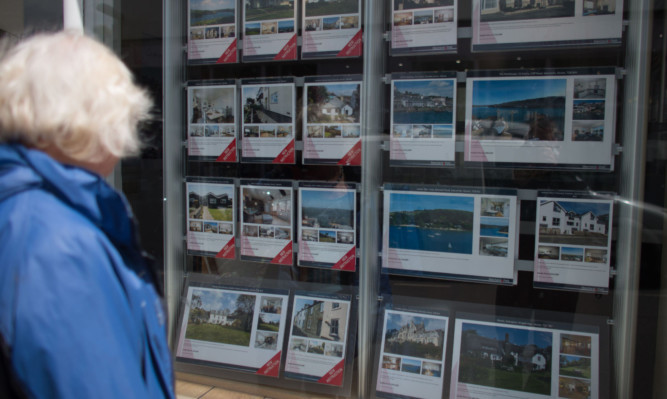Scottish house prices are up by more than 10% since last year despite a dip in the wake of a new tax regime, according to a report.
The average cost of a home in May was £180,892 following a 10.3% increase on the same month in 2014 – twice the annual growth seen in England and Wales.
But that was down 2.1% on April’s figure – the largest backwards step experienced for nearly six years in the house price index from Your Move/Acadata.
Experts said the drop followed an “exceptional” leap in March when high-end buyers rushed to complete expensive purchases under the old stamp duty rates ahead of the introduction of the new land and buildings transaction tax (LBTT).
Report authors said the impact of the LBTT brought in on April 1 is “still reverberating” around the property market.
They also said political changes during the month brought about by the general election outcome resulted in uncertainty for buyers and sellers, which created difficulty in making out the course of the market.
However Christine Campbell, Your Move managing director in Scotland, said the trends that can be gleaned are positive.
“Scottish house prices are up by more than 10% on an annual basis, and the sentiment from buyers in our branches is upbeat as the stability of the housing recovery shines though.
“There is no denying that the recent tax turbulence has affected property prices in the shorter-term, with the latest monthly dip testament to further shock-waves of the LBTT, as the market continues to absorb the change.”
The number of homes sold in May was also down 10% on the previous month and 4% lower than last year.
Ms Campbell said: “With the vast majority of Scottish homebuyers likely to be budgeting less than £254,000 – and so benefiting from reduced transaction costs under the new banding – activity should soon settle back into its natural stride once more.”
Since the new regime came into force there has only been one home worth more than £1 million sold while it was the most expensive parts of Scotland that saw average property prices slip backwards during May, she said.
“But overall, the downwards correction we’re seeing in May has not undone the progress that’s been made so far this year – in the midst of all this disruption, Scottish house prices have gone up 7.6% since January,” she added.
The report showed a 15.2% annual increase in Glasgow, taking the average home price there to £146,286 – a new record.
John Tindale, senior housing analyst for Acadata, said: “An indication that the underlying housing market in Scotland is continuing to see a positive movement in prices is that this month Glasgow has established a new peak average house price.
“Glasgow’s previous peak of £145,847 had been set in October 2007, during the 2007/2008 housing boom. Establishing a new peak price in the wake of the LBTT effect is something of an achievement as it suggests that there is a strong undercurrent in demand for properties, as opposed to prices being somewhat artificially inflated by the sale of one or two high value homes.”
Edinburgh remains the most expensive local authority area, with the average home in the capital costing £266,281.
